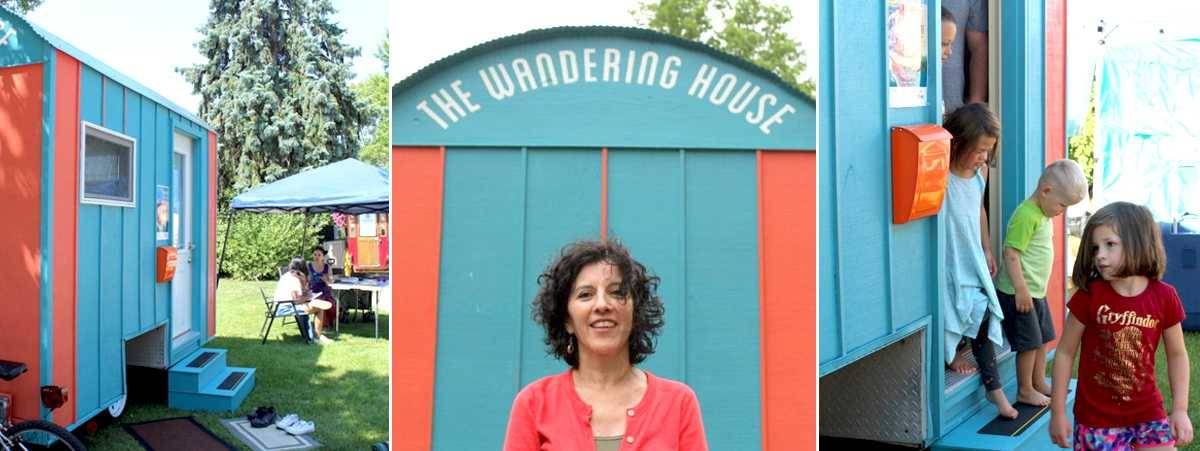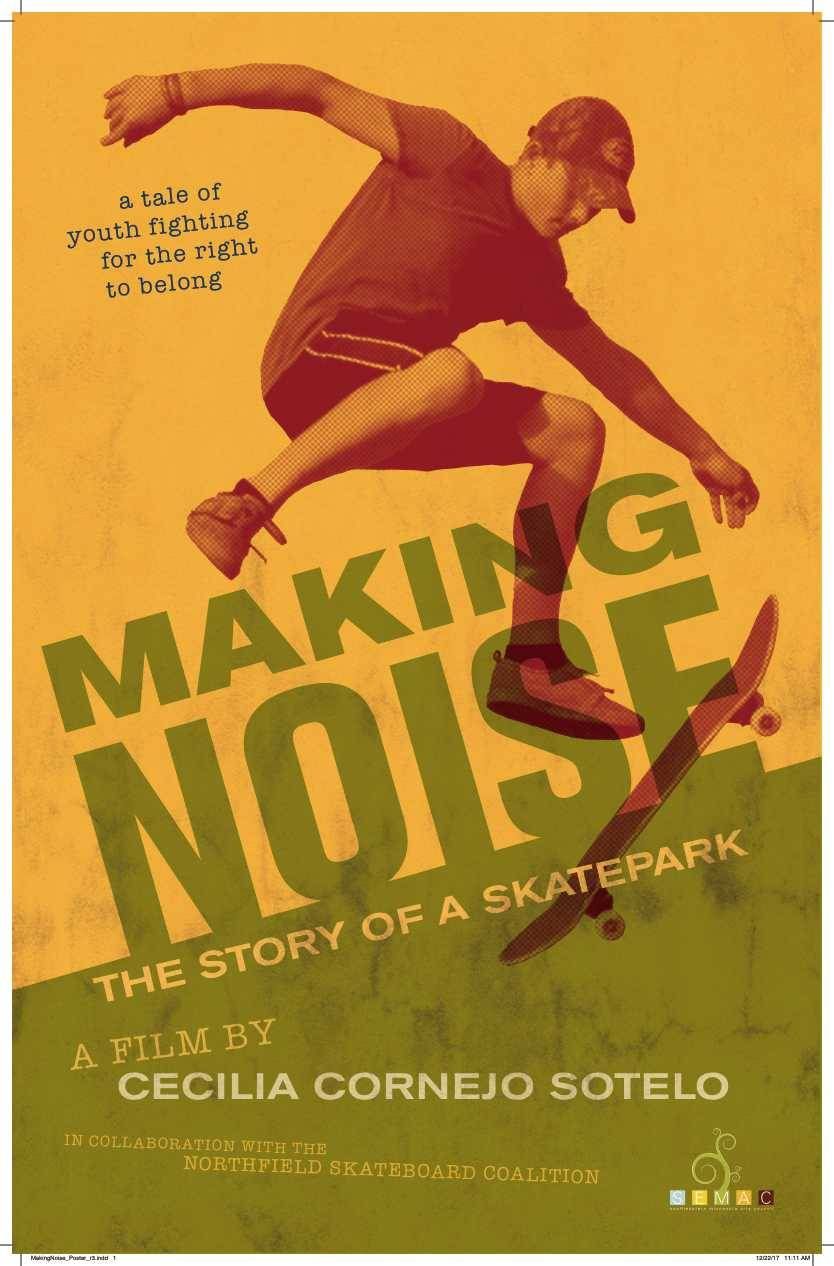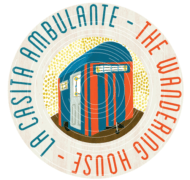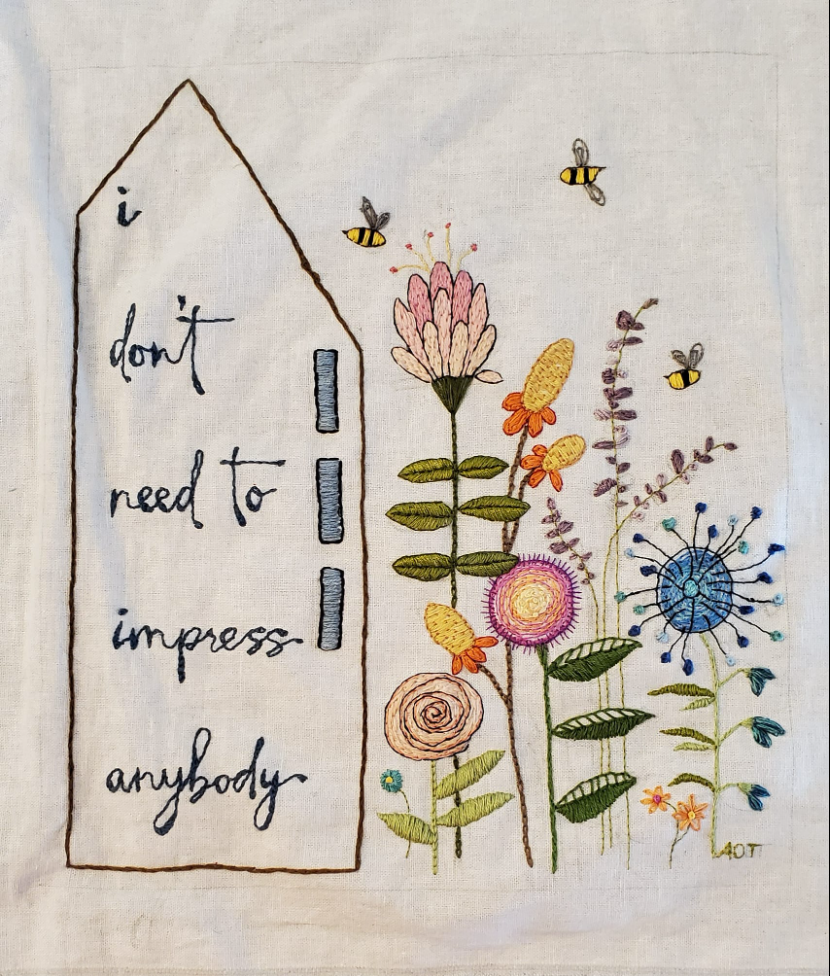Cecilia Cornejo Sotelo Centers Community
Filmmaker, artist, and teacher, Cecilia Cornejo Sotelo creates work that involves her community as both the subjects and the creators
When Cecilia Cornejo Sotelo moved to Northfield, MN in 2012, she was reminded of how she looked and sounded different from those around her—a stark difference to how she felt when she lived in Chicago. A Chilean-born documentary filmmaker, artist, and teacher, Cornejo Sotelo's previous work focused on her personal thoughts and experiences, allowing her to be self-reflective and examine her own story. After finishing an essay film, The song of the apprentice, shortly after moving to Northfield, Cornejo Sotelo became more interested in telling different kinds of stories.
"I was looking forward to connecting with other people and other people's stories, not just my own, but as I did, as I realized my production methodology had to change," she said.

This led to her film, Making Noise –The Story of a Skatepark. She noticed that, even though the community of skateboarders in Northfield looked like everyone else, they were marginalized for other reasons.
"That made me think about how, even though you may belong, because you were born here," she said, "you can still be marginalized for other reasons and not feel at home...be at home in a place where you are supposed to belong."

The film, created in collaboration with local skateboarders, follows the skateboarders as they met with city officials in Northfield to fundraise, envision, and design a skatepark that didn't seem to have a place in the community. By working closely with the subjects of the film throughout the project, Cornejo Sotelo found that the film had a huge impact on the people involved with it. She made sure that they were not only featured in the film, but she showed them how to work with cameras, sound equipment, and how to conduct interviews. They helped piece together the story and editing some sequences of the film itself. The film was also multi-generational, with the soundtrack being created by the older generation of skaters.
For Cornejo Sotelo, "the main object of the film is to give agency to people over their stories, as opposed to taking [the stories] from them and denying their input and contributions."
It was also a different way of filmmaking, one that allowed her to see firsthand how the documentary subjects themselves were affected by the film.
"We always talk about, well, how is the audience going to receive [the film]..." she noted, "but we don't reflect nearly as much, especially in documentary, in terms of how the people who are part of a the films may be affected by....the films that we make."
In addition to the positive community response to the film, she found that the most important part was how the skateboarders saw themselves differently.
"They had already internalized that they were unreliable, disrespectful, impatient; [but] the evidence showed everything to the contrary," Cornejo Sotelo observed.

Continuing to think about how home is conceptualized and building on examinations of displacement, marginalization, and belonging, she created Ways of Being Home. The film connects Northfield with Maltrata, the town where most of Northfield's Mexican residents left to move north. In it, notions of home are explored from the perspective of members of the Mexican community living in Northfield. Because many of the community members she worked with on the film were undocumented, she wanted to ensure their safety without losing their representation. To do so, she worked with bilingual faculty at Carleton College and St. Olaf College to reenact the interviews.
She launched "The Wandering House", a former ice-fishing house retrofitted as a mobile audio recording studio, that invites community members to reflect upon a series of prompts related to home and belonging. They were given a questionnaire and left alone to record their thoughts however they wanted to.
"The idea was for participants to use these questions as a starting point, providing this space —which is actually a very cozy, minimally decorated space—where they could be for as long or as short as they wanted," she said. The community was placed as both the producers and recipients of knowledge, allowing the people to express their thoughts in an inviting, non-judgmental space in an effort to "contribute in crucial ways to a greater understanding among those of us who call Northfield home," according to her website.

Throughout the summer of 2019, Cornejo Sotelo invited residents of Northfield into the space to speak candidly about the concept of home. The project is described as a "welcoming space for community members to speak candidly about their understanding of home, a concept that some of us might take for granted but is in constant flux for displaced communities around the globe." Continuing into the fall in Lanesboro during her artist residency, Cornejo Sotelo was "really looking forward to hearing from people that, I mean, they couldn't be more different than me, you know?" Being in a rural space, she was "upfront about the fact that I am an immigrant, that I am from Latin America yet here I am trying to talk to, you know, and, and people have been, their responses have been very positive."

Projects such as The Wandering House, and its companion, Embroidery Project 2020, create space for community. They came out of Cornejo Sotelo's realization that, while she is a filmmaker, not everything that she wanted to investigate can be done through film. The creation of these works has been informed by being respectful to the needs of the community and according to Cornejo Sotelo, are developed with the intention of putting people at the center, but at the same time, giving myself permission not to impose my expertise on everything I see."

Reflecting on this project, Cornejo Sotelo said she is grateful for "Being able to....give myself the permission to be an artist rather than a filmmaker, to be an artist that sometimes makes films."
To listen to a sound collage from The Wandering House's audio recordings, visit The Wandering House's website.


